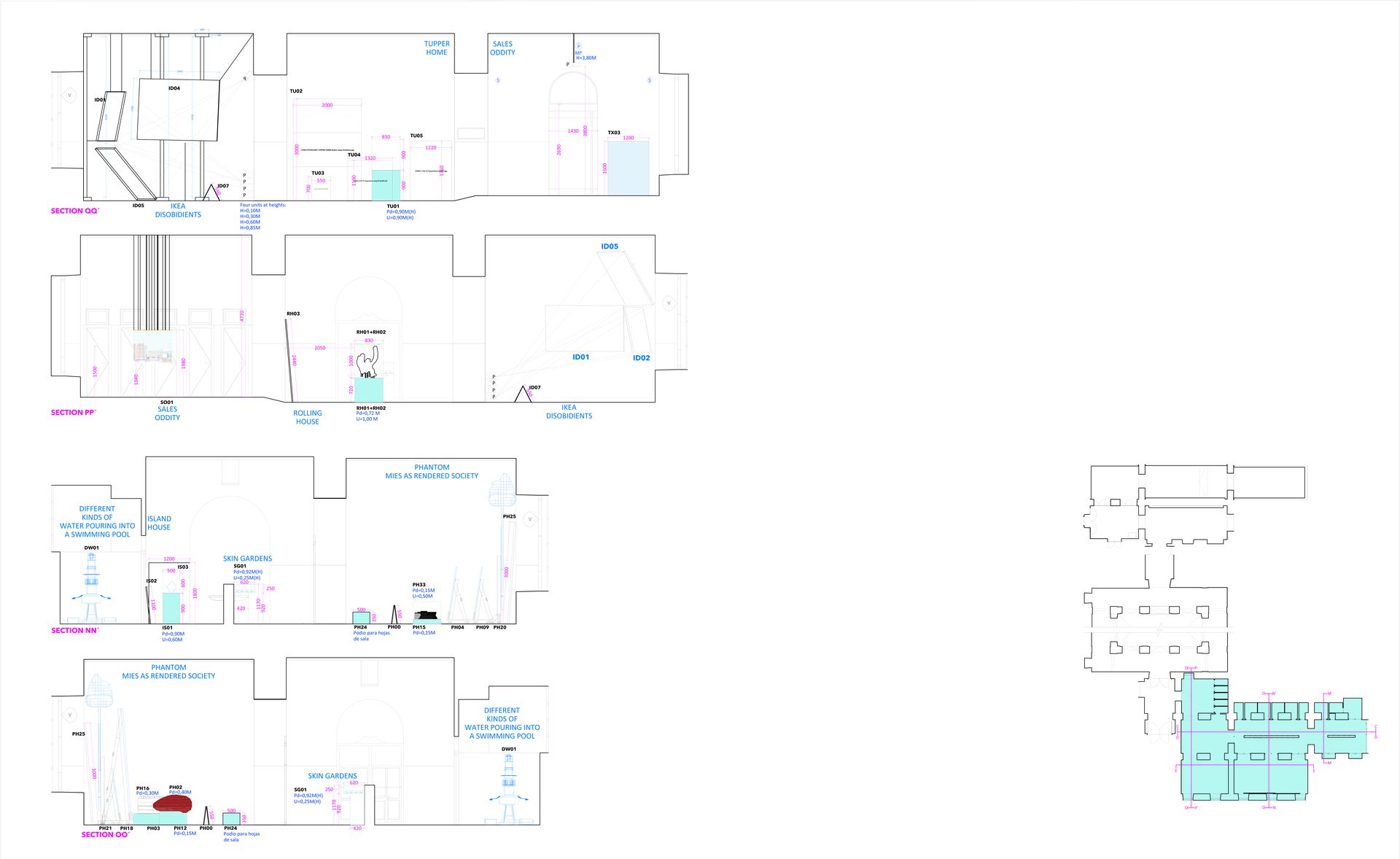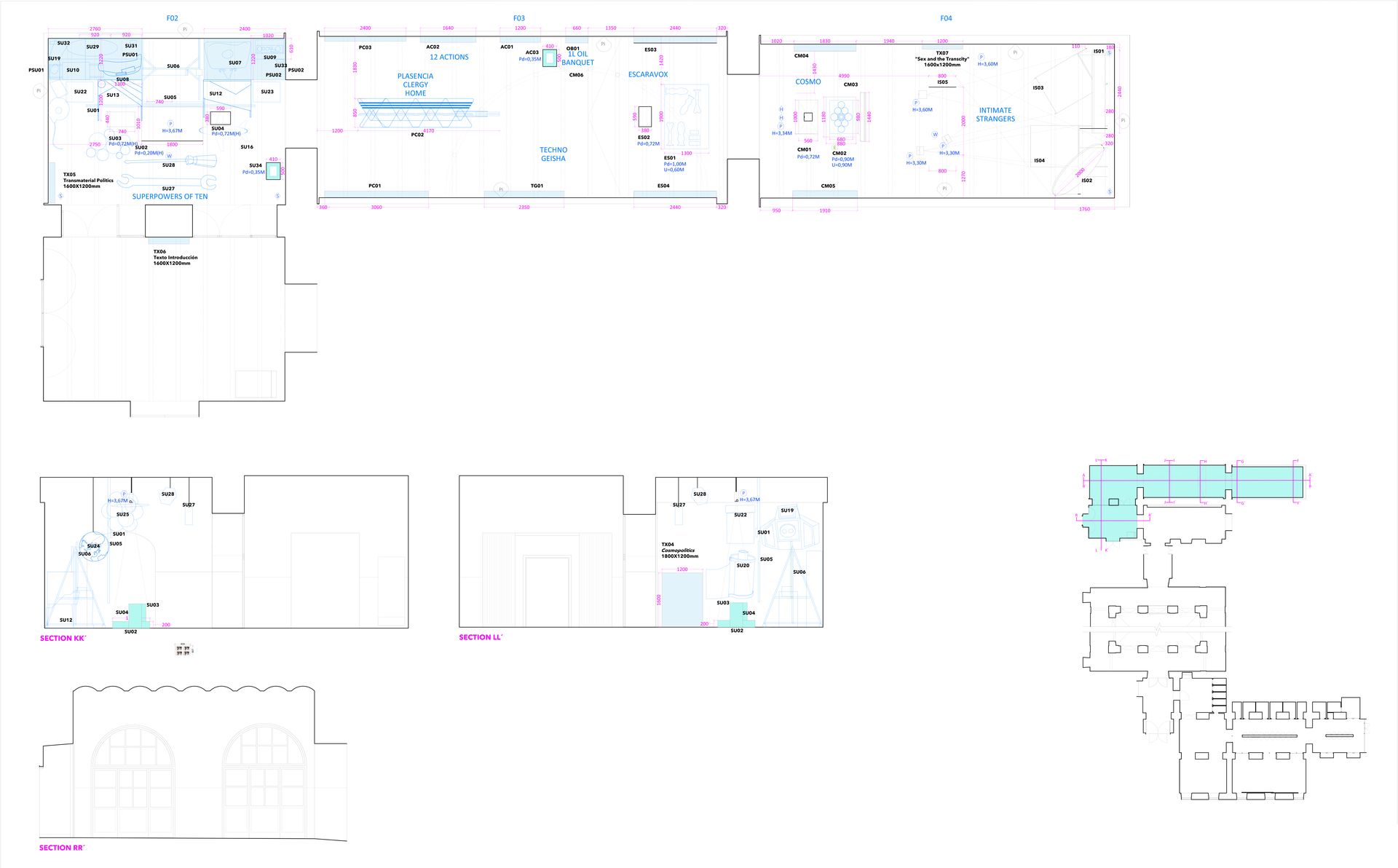About the project
Andrés Jaque and the Office for Political Innovation’s work redefines the political status of architectural materiality. Rather than focusing on isolated objects, their work explores daily life as the result of the interaction between multiple entities, operating at different scales and temporalities. Bodies, buildings, social media, vegetal species, and natural resources are ensembled in shared projects to which architecture, as a political practice, contributes through intervention, empowerment, rearticulation, disobedience, and confrontation. In the Office’s work, matter is a multiple, interscalar, and performative reality: a “transmateria,” resulting from the displacement from the bodily to the territorial, from the biological to the geographical, from the offline to the online. Domestic environments, rather than working as places of sweet familiarity, become arenas of difference. In cosmopolitical compositions, different species negotiate the terms of their coinhabitance. Strategies for the public to install itself in the contemporary networks where power happens or to gain an agency in dynamics that are impossible to govern become, in the work of Andrés Jaque and the Office for Political Innovation, opportunities to explore specific forms of political action.
Installed at the intersection of design, research, and activism, the Office’s work is based on the unveiling of the mechanisms that make architecture operate as an agent of exclusion, in order to then propose strategies and devices capable of challenging these mechanisms. Historical architectural works, such as Mies van der Rohe and Lilly Reich’s Barcelona Pavilion or Charles and Ray Eames’s Powers of Ten, are reconstructed in the work of Jaque and the Office for Political Innovation in order to reveal the conflicts and dependencies that the original projects concealed. In the same way, designs such as the House in Never Never Land, COSMO, Escaravox, and the Plasencia Clergy House reorganize the societies they participate in, so that these projects can act within the tensions and controversies they are part of.
Architecture does not accommodate the societal; architecture is, itself, society. The Office’s work makes the claim that architectural devices are equipped with a specific political agency: a form of political autonomy by which the dimensions, the qualities, the ensembles, and the performances that architecture contributes to setting into play constitute themselves as bodies and societies. However, this agency is not absolute, but one negotiated with all the other entities participating in the construction of daily life.
‘Transmaterial Politics” presents a selection of the work developed by Andrés Jaque and the Office for Political Innovation, organized around four constellations of projects, each gathering multiple formats and methodologies to explore the ways that architecture participates in four notions of the political: Sweet Domestic Arenas, Cosmopolitics, Performing Publicness and Sex and the So-Called City.
Credits
Organized by:
Ministerio de Educación, Cultura y Deporte. Subdirección General de Promoción de las Bellas Artes
Curated by:
Ariadna Cantis
Coordination:
Mariflor Sanz
Exhibition Design:
Andrés Jaque / Office for Political Innovation
Project Leader: Roberto González García
Laura Mora, Paola Pardo-Castillo, Valentina Marín, Letizia Ferolla, Marta Jarabo, Pablo Maldonado, Solé Mallol, Danai Kamdar, Isabel Sánchez, Belverence Tameau.
Photography:
Imagen Subliminal (Miguel de Guzmán + Rocío Romero)
Graphic Design:
El vivero
Exhibition Installation:
Artec Exposiciones
Film and Media Installation:
Art Play. Servicios Audiovisuales
Print Production:
Boomerang
Lighting:
Intervento
Transportation:
World Pack-Art & Services
Insurance:
Vadok Arte – Axa Art
Press:
Conchita Sánchez




